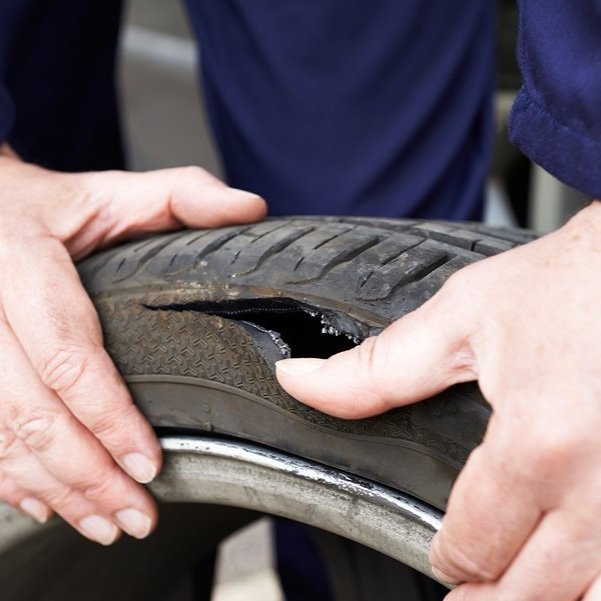3 Signs Your Tires are Just Not Working For You Anymore.
Take a look at your bike’s tires to see if they’re showing any of these signs that determine if you need to replace your tire.
If you get flats consistently, you have to start wondering, “Am I the problem? Or is it just my tires?” Sometimes it might be the former, in which case you may consider getting better at dodging potholes and glass. However, it can be difficult to tell when the problem is the latter. Keep reading to learn how to tell when it’s time to swap out your old tire for something fresher!
Worn Tread
The most clear sign that it’s time for a new tire on your bike is the level of wear on the tread. When your tire starts out, the tread will be very prominent – however, as time goes on, that tread will naturally wear away do to regular use. This is especially obvious when you’re riding really knobby gravel or mountain tires, but the tread pattern can be more subtle on road or commuter tires. In that instance, take a look for tread wear indicator – little grooves pressed into the tire so that when material naturally wears away, the indicator disappears, which indicates that the tire has thinned out and it’s time to replace them. The wear indicator can appear differently on different tire models, so if you're not sure what they look like on your specific tire, be sure to look it up or bring it into the shop for a mechanic to check out. For Continental tires, take a look at the picture below to see what they look like on that brand’s tires.
See those tiny holes on the tire to the left? If you can, that means the tire is good to go! But if the holes have disappeared, you should start seriously considering getting a new set of tires.
Shredded Sidewall
Another clear sign that your tire is on its last legs is if the side wall is showing significant tears or dry rot. Dry rot is when tires start to dry out and crack – it usually becomes apparent on the sidewall of your tire and can set in due to age or exposure to the elements. When you see it show up in your tires, that’s a good sign that they are toast. Look out for when you can start to see the individual threads that make up your tire and for large gashes along the side.
Holes & Cuts
Now onto the sign that may be the hardest to notice: holes & cuts that go completely through your tire. There’s a difference between the small nicks & scrapes that naturally develop through regular use and huge gashes that slice through your tire. There’s also a lot of middle ground between those two extremes, which can make it hard to tell when it’s time to trash your old tire and get a fresh start.
The reason a tire needs to be replaced when it has a hole in it is because a tube on the inside of that tire will pop out through the hole when it’s inflated. Keeping that in mind is useful when determining whether a hole is big enough to warrant replacement – if it looks like a tube could feasibly pop out of the hole, then the tire should be replaced. I like to hold up the tire to a light source and check if the light goes all the way through the puncture. If the light can’t make it through the tire, then neither can a tube. Make sure that what created the hole is removed from the tire, throw in a fresh tube and you’re good to go! If the light does shine through, you’re still not totally out of luck. Keep an emergency boot in your flat repair kit to create a barrier between the new tube and the damaged tire to keep it in while inflated. This one from Park Tools is great because it has an adhesive that makes it easier to stick in place, but a dollar bill or even the wrapper from your nutrition gels could work in a pinch. This boot is perfect for when you’re out on a long ride, but it still isn’t as strong as a totally new tire so you should definitely consider getting a replacement when you get home.






